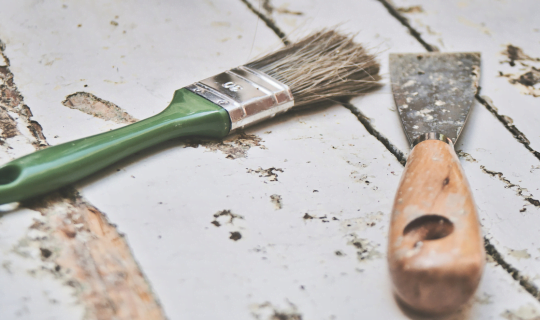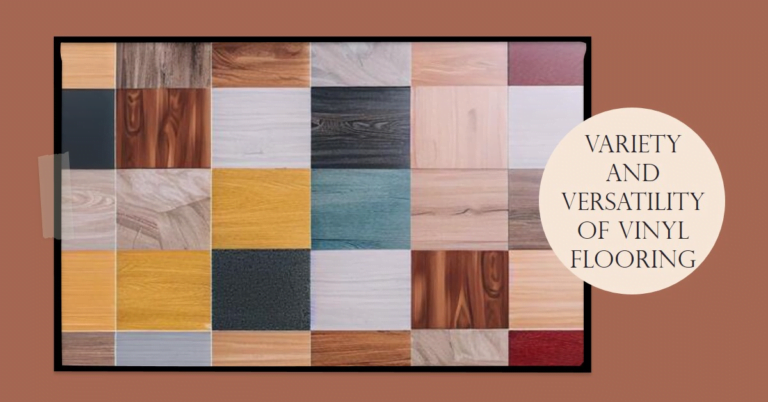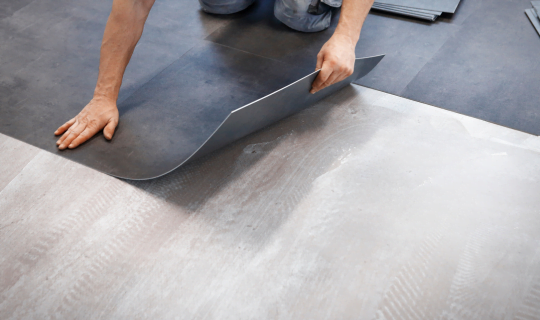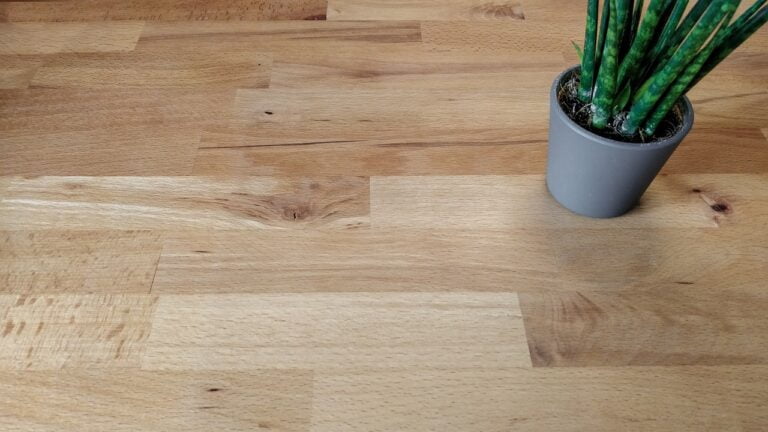Vinyl Flooring: Cleaning & Upkeep
Master the art of vinyl flooring maintenance with our comprehensive guide. From basic cleaning to deep cleaning, we’ve got you covered. Uncover the secrets to pristine vinyl floors now!
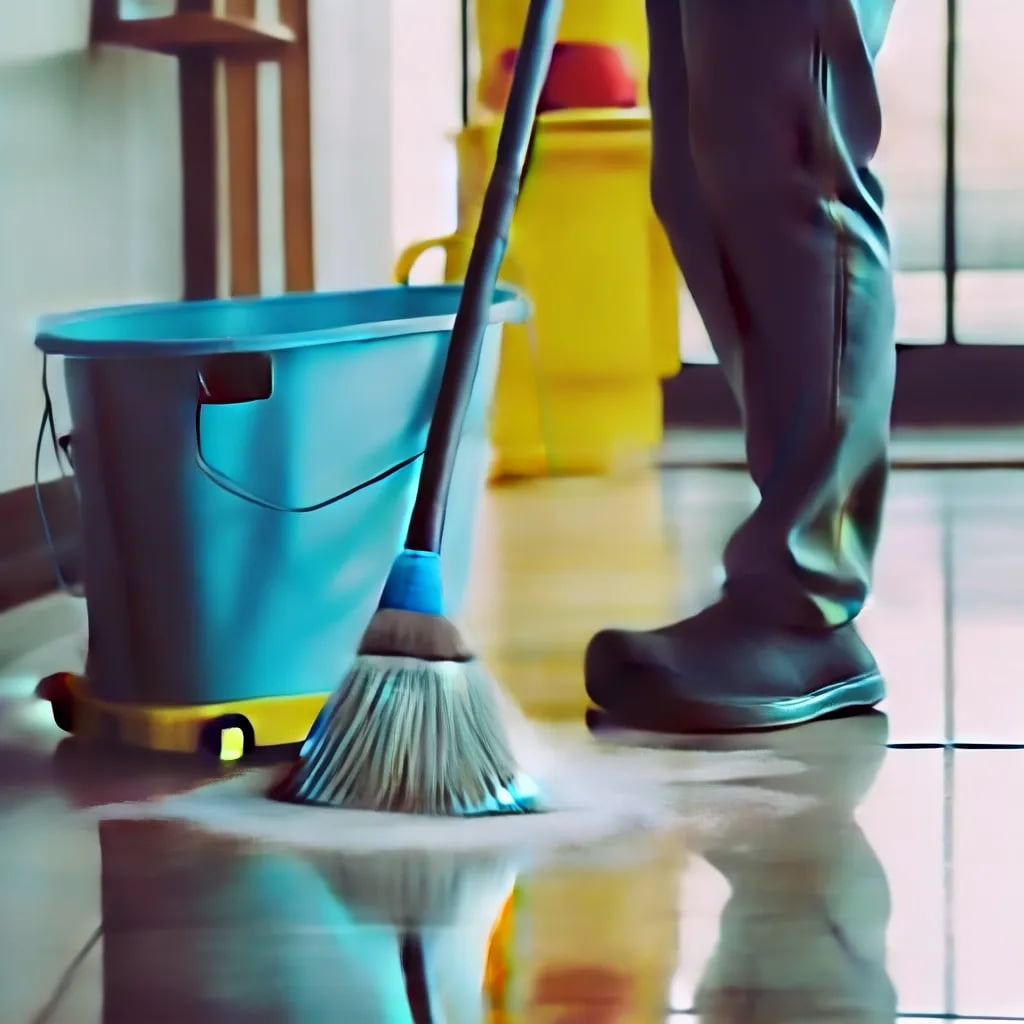
Vinyl flooring is a sought-after choice for homeowners and interior designers alike because of its aesthetic appeal, durability, and low maintenance. However, it is essential to understand how to properly clean and maintain your vinyl floors in order to ensure their longevity and immaculate condition.
In this article, we will present a detailed guide on the cleaning and upkeep of vinyl flooring. This discussion will cover everything from basic cleaning to comprehensive deep cleaning, as well as the best cleaning agents for vinyl flooring.
We will also touch on the usual errors to steer clear of while cleaning vinyl flooring, and provide supplementary suggestions for its maintenance. By the end of this piece, you will possess a thorough understanding of how to maintain the prime condition of your vinyl floors.
Understanding Vinyl Flooring
Before delving into the specifics of maintaining your floors, it is pivotal to understand the distinctive characteristics of this versatile material.
Vinyl flooring comes in a variety of formats, including planks, sheets, and tiles. This adaptable flooring is available in an array of designs, mirroring natural elements like wood, stone, or ceramic tiles.
Vinyl flooring’s appeal among homeowners and interior designers lies in its straightforward installation methods, robustness, and the variety of design options.
This resilient flooring is an exceptional choice for areas with high foot traffic due to its resistance to scratches, stains, and fading. Moreover, its upkeep is straightforward and economical in comparison to other flooring alternatives.
Vinyl flooring’s low environmental impact also makes it an eco-friendly option as it is recyclable and often crafted from recycled materials.
Grasping the distinct features of vinyl flooring will facilitate an enlightened decision when choosing flooring for your abode.
Basic Cleaning of Vinyl Flooring
Appreciate the simplicity of maintaining the aesthetic appeal of your vinyl floors by adopting these uncomplicated cleaning techniques.
Begin by conducting frequent sweeping or vacuuming to deter the accumulation of dirt and debris; this measure is instrumental in mitigating scratches and potential damage to your vinyl floors.
When it comes to mopping, refrain from overuse of water, as surplus moisture poses a threat to the integrity of vinyl floors. A damp mop or a microfiber mop in conjunction with a gentle cleaning agent is the preferred alternative.
In addition to routine cleaning, implementing certain preventive strategies can assist in preserving your vinyl floors in prime condition.
Place doormats at your home’s entryways to help deter the transference of dirt and debris onto your floors.
Consider positioning furniture pads beneath your furniture legs, an action that effectively safeguards against scratches and damage.
In the event of stain removal, refrain from abrasive cleaners which may inflict damage on vinyl floors. A gentle cleaning solution coupled with a soft-bristled brush can suffice to delicately eliminate stains.
Lastly, ensure your floors are completely dry after cleaning to deter moisture from infiltrating the vinyl and instigating damage.
Deep Cleaning Vinyl Flooring
To keep your floors looking their best, it’s time to roll up your sleeves and give them a deep clean using techniques that will leave you feeling satisfied with the results.
Deep cleaning vinyl flooring involves more than just a quick sweep or mop. Here are some tips and tricks for giving your floors the thorough cleaning they deserve:
- Steam cleaning is one of the most effective methods of deep cleaning vinyl flooring. This will help to remove any dirt, grime, or stains that have built up over time.
- If you don’t have access to a steam cleaner, a scrubbing machine can also be a great option. Make sure to use a gentle brush attachment to avoid damaging the surface of your floors.
- For those who prefer to use natural cleaning solutions, there are plenty of options available. Mix equal parts white vinegar and water for a simple yet effective cleaning solution.
- If you’re not up for tackling the job yourself, consider hiring a professional cleaning service to deep clean your vinyl flooring for you. This can be a great option if you have particularly stubborn stains or buildup that won’t come off with regular cleaning methods.
When deep cleaning your vinyl flooring, it’s important to take some precautions to avoid damaging the surface. Avoid using harsh chemicals or abrasive scrubbers that could scratch or discolor your floors.
Additionally, be mindful of the amount of water you use during cleaning, as too much water can damage the adhesive holding your vinyl flooring in place.
With the right tools and techniques, you can give your vinyl floors a deep clean that will leave them looking brand new.
Cleaning Agents for Vinyl Flooring
If you want to keep your floors looking fresh and new, you’ll love discovering the range of cleaning agents available that will help you achieve maximum shine and sparkle.
When it comes to vinyl flooring, there are several options to choose from, including eco-friendly options, DIY solutions, commercial cleaners, natural remedies, and abrasive vs. non-abrasive cleaners.
Eco-friendly options are becoming increasingly popular, and for a good reason. They’re gentle on the environment and safe for your family and pets.
DIY solutions are also a great option for those who prefer to use natural ingredients found in their homes.
Commercial cleaners are readily available and offer a range of options for different types of vinyl flooring. It’s essential to choose the right cleaner for your specific flooring type to avoid any damage.
Natural remedies, such as vinegar and baking soda, are also effective in cleaning vinyl floors. However, it’s important to note that abrasive cleaners should be avoided as they can scratch and damage the surface of your vinyl flooring.
Cleaning Specific Types of Vinyl Flooring
Maintaining the cleanliness of your vinyl floors is crucial, especially when dealing with specific types of planks that require extra care and attention.
When it comes to stain removal, textured vinyl flooring can be challenging to clean. Dirt and debris can accumulate in the grooves, making it harder to get rid of stubborn stains. To remove stains from textured vinyl, use a soft-bristled brush and a mild cleaning solution. Avoid using abrasive tools or harsh chemicals that can damage the texture of the vinyl.
After cleaning, rinse the area thoroughly with water and dry it with a clean cloth.
On the other hand, luxury vinyl and glossy finishes require regular cleaning to maintain their shine. These types of vinyl are perfect for high traffic areas as they are durable and easy to maintain.
To clean luxury vinyl and glossy finishes, use a soft-bristled brush or a microfiber mop to remove dirt and debris. Avoid using abrasive tools or harsh chemicals that can scratch or damage the surface of the vinyl.
You can also use a vinyl-specific cleaner to keep your floors looking shiny and new. It’s essential to follow the manufacturer’s instructions when using any cleaning solution to avoid damaging your vinyl floors.
Common Mistakes to Avoid When Cleaning Vinyl Flooring
You don’t want to make these common mistakes when keeping your vinyl floors looking their best, as they can significantly impact the lifespan and appearance of your investment. Here are some common mistakes to avoid when cleaning vinyl flooring:
- Over-wetting floors: Using too much water when cleaning your vinyl floors can seep into the seams and edges, causing the adhesive to loosen. Always use a damp mop instead of a soaking wet one, and be sure to dry the floors thoroughly after cleaning.
- Abrasive cleaners: Avoid using abrasive cleaners, such as steel wool or scouring pads, as they can scratch and damage the surface of your vinyl flooring. Instead, use a mild cleaning solution or a manufacturer-recommended cleaner.
- Using a steam mop: While steam mops may seem like a convenient option for cleaning vinyl floors, the high heat and moisture can damage the flooring’s surface and adhesive. Stick to using a damp mop instead.
- Neglecting seams: Dirt and moisture can easily seep into the seams and edges of your vinyl flooring, leading to damage over time. Be sure to clean and dry the seams thoroughly, and consider using a sealant to prevent moisture from seeping in.
By avoiding these common mistakes, you can ensure that your vinyl flooring stays in top-notch condition for years to come. Remember to also use a doormat to prevent dirt and debris from being tracked onto your floors and to clean up spills promptly to prevent staining.
Additional Tips for Maintaining Vinyl Flooring
To keep your floors looking great, don’t forget to regularly sweep or vacuum up dirt and debris, as well as use felt pads on furniture legs to prevent scratches.
In addition to these preventive measures, it’s essential to give your vinyl flooring some seasonal care. During the winter months, it’s a good idea to use doormats to prevent salt and snow from damaging your floors, while in the summer, it’s important to keep your floors cool and dry to prevent warping.
If you want to provide extra protection for your vinyl flooring, consider applying a protective coating. There are many types of coatings on the market, such as wax or polyurethane, that can help prevent scratches and stains from damaging your floors. However, before applying any coating, make sure to read the manufacturer’s instructions carefully.
Finally, if your vinyl flooring does become damaged, there are repair solutions available that can help you fix the problem. Some eco-friendly options include using baking soda and water to remove stains, or vinegar and water to clean the floors.
By following these tips, you can keep your vinyl flooring looking its best for years to come.
Frequently Asked Questions
To wrap up, let’s address some common questions about cleaning vinyl flooring:
- What can I use to clean vinyl flooring? You canuse a mild cleaning solution specifically designed for vinyl flooring or a DIY solution of vinegar and water.
- How often should I clean my vinyl flooring? Regular cleaning should be done weekly, while deep cleaning can be done as needed, usually every few months.
- Can I use a steam mop on vinyl flooring? It’s generally not recommended as the heat and moisture can damage the vinyl.
- What should I avoid using on my vinyl flooring? Avoid using abrasive cleaners, scrubbing tools, and excessive water.
- How can I prevent scratches on my vinyl flooring? Use furniture pads, lift rather than drag furniture when moving it, and keep your pet’s nails trimmed.
Conclusion
Overall, vinyl flooring is a great option for those who want a stylish, durable, and low maintenance flooring option. However, it’s important to use the proper cleaning and maintenance methods to keep it looking its best.
Basic cleaning should be done regularly, while deep cleaning can be done periodically to remove any stubborn dirt or stains. It’s also important to use the right cleaning agents for your specific type of vinyl flooring to avoid damage.
Additionally, be sure to avoid common mistakes such as using abrasive tools or cleaners and allowing spills to sit for too long. By following these tips and additional maintenance suggestions, your vinyl flooring can stay looking great for years to come.
Whether you have sheet, tile, or luxury vinyl flooring, taking the time to properly care for it will help to extend its lifespan and keep it looking like new. So, take the time to learn about your specific type of vinyl flooring and establish a regular cleaning and maintenance routine to ensure that it stays in pristine condition for years to come.

